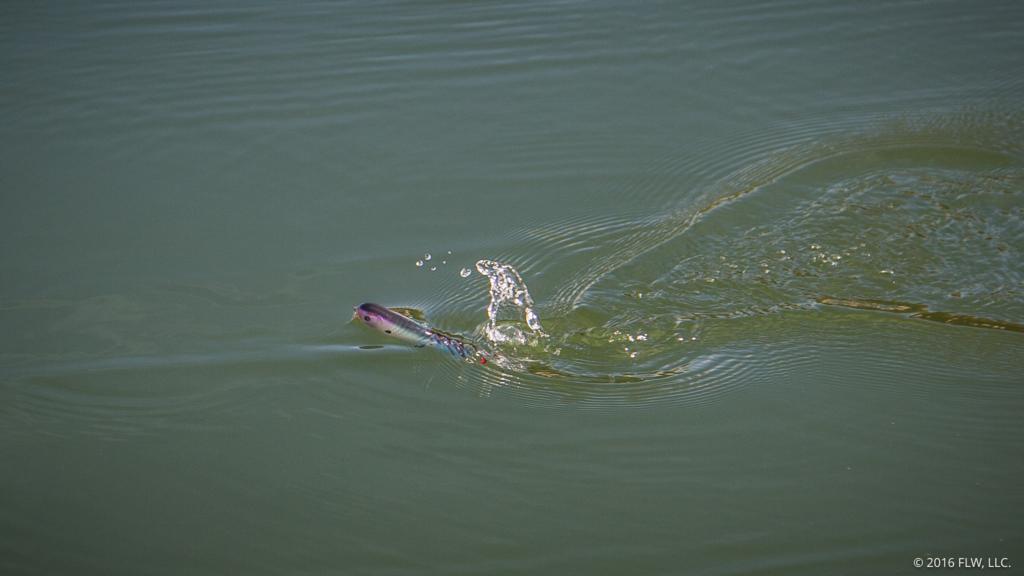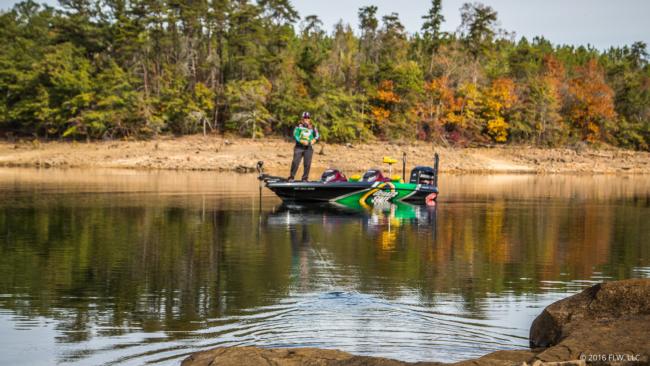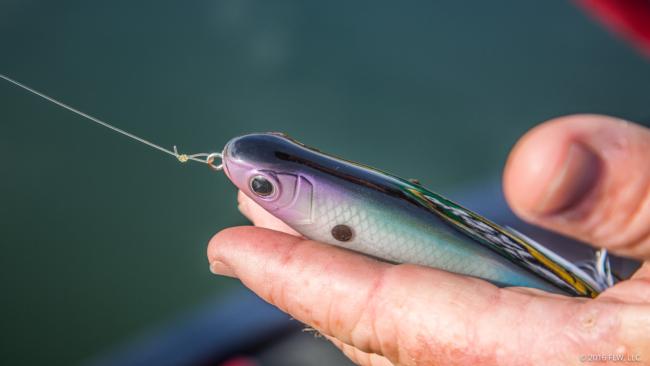Scott Canterbury’s Walking Bait Tips
The Alabama pro’s prescription for more topwater success

Walking topwaters are a staple for bass fishing, particularly in the summer and fall. Being a pro, Scott Canterbury is as expert in the ways of a walking bait as about anyone. Even if you’re settled in your ways, the Quaker State pro’s tips might help you put a few more in the boat.
Situations
Canterbury says he keeps a walking bait tied on for much of the year, but particularly likes one in the spring and the fall.
“In the spring, during the spawn or postspawn, I’ll throw it around the spawning areas,” says Canterbury. “If they’re down there spawning or guarding fry that will get them to come up and show themselves. A lot of times they don’t get the bait, but you can come back and catch them on something else.”
In the fall, it’s more about getting fish to eat than show themselves.
“In the fall it’s about schooling fish,” says Canterbury. “If fish are chasing bait or in open water, that’s when I fish a walking bait. When you’re not necessarily targeting cover as much as you are bait, that’s when I fish it.
“They [walking baits] are aerodynamic, and you can throw them a long way. When fish come up schooling it’s a bait that you need to have on.”
Of course, schooling fish can be notoriously frustrating, so Canterbury likes to have other options handy.
“If they don’t hit it I go to a swimbait or a jerkbait,” says Canterbury, “something that’s down below the surface. Even though fish are schooling a lot in the fall, they’re not necessarily coming up to get a bait, so much as chasing a bait up to the surface.
“I like a steady retrieve,” he adds. “In the fall around schooling fish, sometimes you have to walk it a little bit faster than you do in the spring. Every once in a while I’ll change it up during a cast, and if one boils at it I’ll maybe speed it up a bit like it’s trying to get away, but usually I stick with a steady cadence.”
Tackle tips
Throwing a walking bait is like fishing any other topwater, in that you want it to stay at the surface, work well and land fish. Canterbury chooses his tackle accordingly.
“I’ve got to where I like braid, but you’ve got to have a real soft rod to throw it on braid,” says Canterbury. “So I usually throw straight copolymer – 15-pound-test green P-Line CXX – with a 7-2, medium-action rod and a 7:1 high-speed reel anytime I’m throwing a walking bait.”
There are about a million walking baits on the market, and Canterbury isn’t shy to say that he has used and still uses many of them. Per Canterbury, one of his favorites now is the Bagley Knocker B, a long-casting molded topwater that is easy to walk.
Canterbury likes that it comes with good hooks, but when he does need to change them he goes with standard round-bend trebles. According to Canterbury, a round bend is better than a wide-gap treble for “snagging” fish that just take a swipe at a bait.
Finally, the Alabama pro always removes the split ring and attaches the bait with a loop knot.
“A lot of baits come with a split ring, but it weighs a little bit and keeps the nose down,” says Canterbury. “If you get the nose up a little bit it makes it easier to walk the bait back and forth.”
Canterbury uses a simple overhand loop knot that works regardless of line type.

